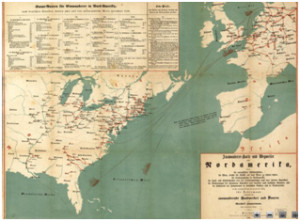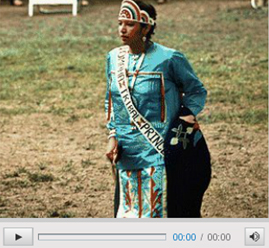Digital Libraries [DLs] can be seen as a tool in social production to create, spread, and store information for millions to access and utilize. In the book, Digital Library Use: Social Practice in Design and Evaluation, the authors talk about DLs as systems “central to knowledge, activity, identity, community, and order” that are supported by artifacts, technologies, and practices. This suggests that a DL is not just some new form in which to organize information; they are instead “a change in the social and material bases of knowledge work and the relations among people who use and produce information artifacts and knowledge” (Bishop, Van, & Buttenfield, 2003, p. 272). Regarding the relations among people using a DL, the authors recommend there be a focus on the clientele or customers using the content. How people search a database and use the information may depend on what their background or purpose is for the research. DLs can be used for entertainment and casual or serious research, ultimately affecting the way information is disseminated.
Especially important to cultural institutions, DLs create and organize information to provide some compelling content that is easy to access, comprehend and use. The authors assert that, “a deep understanding of work is needed to make an artifact useful; an elegant design is no guarantee of quality” (Bishop et al., 2003, p. 8.). This delicate balance of utility and an attractive interface is essential to the maintenance of a DL that is useful to both the casual and serious user. Cultural institutions grapple with this interface challenge as some believe that plain access to an image or digital copy of an object is enough because they have given more power to an object’s appearance. This, however, does not consider the knowledge divide between its surface context and known context. Further exacerbating contextual challenges is how users of varying social backgrounds are also absorbing and analyzing the information with differences in language, literacy and development. This section of the case study seeks to explore how the World Digital Library tackles these challenges and addresses the vast contrast of users partaking in the several databases to enrich their communities, bring about advocacy and value to the materials, and continue to develop the World Digital Library.
The mission of the World Digital Library (WDL) is described in the principal objectives to:
- Promote international and intercultural understanding;
- Expand the volume and variety of cultural content on the Internet;
- Provide resources for educators, scholars, and general audiences;
- Build capacity in partner institutions to narrow the digital divide within and between countries.
(WDL, n.d., Mission)
From these principal objectives, we can begin to discern some of the potential values and benefits to the general public and research communities and focus on specific environments within each. The overall potential values and benefits to the general public can be described in the opportunities for researching personal heritage and local/regional/global history to cultivate a more informed understanding of personal and fellow citizen’s heritage. WDL partnering institutions have uploaded hundreds and even thousands of objects from their collection databases including the object history and the metadata for perusal.
Looking at the WDL website, one can begin searching through the objects from around the world or even in their own backyard by defining search parameters that will disseminate the most valuable information. Ranging from text, image, audio and video, tangible and intangible heritage objects are made available in searches. Through searching, a person could perform a cursory search of objects from countries apart of their own heritage. While this would not serve as an official genealogical search, the objects associated with the cultures represented in the WDL can help to inform personal heritage with a broader visual context. For example, perhaps someone is interested in researching their Omaha Indian heritage and their search reveals the “Pow-Wow Princess Song”, Figure 1, from the Omaha tribe in Nebraska. Continued research on this or related topics (Omaha-Ponca language, the Omaha Indians, etc.) is facilitated through the available metadata listed on the “Pow-Wow Princess Song’s” object page (White & Fleischhauer, 1983). From this, an enhanced understanding can begin to take form to assist even the casual observer or researcher in a more personal context. By the same token, a general researcher in the Omaha, Nebraska area for example is looking to better inform themselves of local heritage they may feel is almost foreign to their environment. The researcher could view this item and begin to enhance their understanding of the diverse cultures surrounding them. From this, one of the principal objectives to promote intercultural understanding begins to take shape and now one more person feels a less foreign element within their urban or rural community (U.S. Library of Congress, 2013). In either case, both researchers can take the opportunity to connect with the institution[s] associated with the “Pow-Wow Princess Song” or other Omaha Indian items to conduct further research and/or make a visit to the actual institution.
Communities within the general public that may benefit the most from the WDL would be residents in both rural and urban areas, including multilingual environments and residents that are disabled. Both urban and rural residents can perform searches for institutions that provide opportunities for seeking repository options wherein the institution may be open to receiving donations of items from residents or fellow institutions. Expanding on this, a person could also be inspired by the WDL’s benefits and thus further promote the DL to their local or favorite institutions not already a part of the WDL. In the article, “Digitization in Developing Countries,” published around the 2009 release of the WDL, the last three principal objectives described in the WDL mission are represented in the report of future prospects for the WDL. According to the article, digital conversion centers will be acting as repositories for institutions to catalog, translate, and “ingest” as many materials as possible that could be used to build more focused online collections from their existing collections. Some institutions could even seek assistance with creating new national DLs to serve their low bandwidth and low Internet use communities, ultimately providing new educational opportunities for individuals (Solis, 2009).
WDL users in rural and urban areas of developing or developed countries could also gain access to cultural heritage objects that they may not have the ability to travel and see the objects in person. To that end, whether the people are at home or travel to the institution, there are a multitude of options available for dissemination to diverse audiences within the public sphere. The WDL has a multilingual interface that will translate the website and object histories into one of seven languages. In a recent House Appropriations Subcommittee on Legislative Branch Hearing the Librarian of Congress, James Billington, made a testimony on the Library of Congress’ involvement with the National Library Service for the Blind and Physically Handicapped, referencing the WDL in its effort to provide audio inscription for its blind users (Federal Information & News Dispatch, Inc., 2013). Known as a multimodal system, object histories can be translated into one of seven languages that can be read, heard, and depending on the object, watched, thus providing access to illiterate or disabled community members via the WDL’s “Listen to this page” option (White & Fleischhauer, 1983).
Perusing the object history page even more, a general public researcher could explore the social media components of the WDL by posting links to Twitter and Facebook profiles. Recognizing the modern means of researching and communication of information for many younger citizens, the WDL director, John Van Oudenaren said in a 2009 interview with Nature News that the WDL is striving to reach younger people through making research available online (Cressey, 2009). Along with the social media components to attract savvy users, School Library Journal’s Kathy Ishizuka applauds the WDL’s “intuitive interface” that allows researchers of all types to easily navigate through cultural heritage histories and compelling visuals that are “not filtered through other lenses such as the news media” (Ishizuka, 2009). Linking cultural heritage objects to social media outlets not only provides further exposure to the item itself but also the holding institution and the WDL collection, thus creating an ongoing discourse to develop and support intercultural understanding.
The content available to WDL users is also strengthening professional partnerships with fellow cultural and educational institutions affording researchers of all ages the opportunity to use primary resources for their projects. In another article in the School Library Journal, Richard Byrne briefly discusses the potential impact the WDL has on getting kids engaged with historical content to support teachers in the classroom. Byrne references the maps, like in Figure 2, and images that provide an attractive visual versus solely textual starting point for many students and teachers to begin research for projects (Byrne, 2013). Another article by Mary Alice Anderson, illustrates how the WDL is helping educators meet the requirements of the Common Core Standards by providing links to objects in institutions like the National Library and Archives of Egypt where the objects are related to math and science while other resources such as maps are being used to teach American history. School projects in subject areas such as immigration and emigration are also supported by many of the maps, journals and brochures available in the WDL. Students studying foreign languages are using the multilingual search option to search for objects in another language to see what words and phrases they can decipher into their native language (Anderson, 2013).

In regards to higher education institutions and research organizations, the WDL helps informs several research projects in places like the United Kingdom, Egypt, China, and the U.S. Rare collections in the Wellcome Library in London and the Bibliotheca Alexandrina in Egypt have been digitized and made available in the WDL for researchers while also strengthening a partnership between the two institutions. From this partnership, the WDL is helping to make non-English language digital resources accessible for further exploration that begets an increased understanding of the cultures represented in the collections. In another partnership through the WDL, Chaucer’s manuscripts have been digitized by the University of Manchester’s John Rylands University Library in conjunction with the Rosenbach Museum and Library in Philadelphia, PA. The digital partnership will join together fragments of the existing manuscripts that are held by both institutions. In addition to the cultural objects and partnerships developed through the WDL, several U.K. biomedical research funding organizations as a part of the U.K. PubMed Central are digitally archiving over a million full-text, peer-reviewed research papers while the U.K. government has asked U.K. universities to supplement their course materials, especially online, in part with materials available through the WDL (Ashling, 2008). The National Library of China has contributed manuscripts, maps, books, and more to the WDL to exhibit Chinese history in hopes of establishing an understanding of their own culture but also to promote the preservation of cultural objects in general that promote “the prosperity and progress of all human civilizations” (Raymond & Van Oudenaren, 2009, p.1). These examples illustrate the importance of preservation for the general public and research communities for not just preserving for preservation’s sake, rather providing a concrete reason to why any global citizen should give credence to cultural objects. We preserve tangible and intangible objects to create a global discourse and intercultural understanding of friends and neighbors locally, regionally, and from afar. Without that, all we have is an exorbitant spreadsheet or database of metadata without a common thread.
